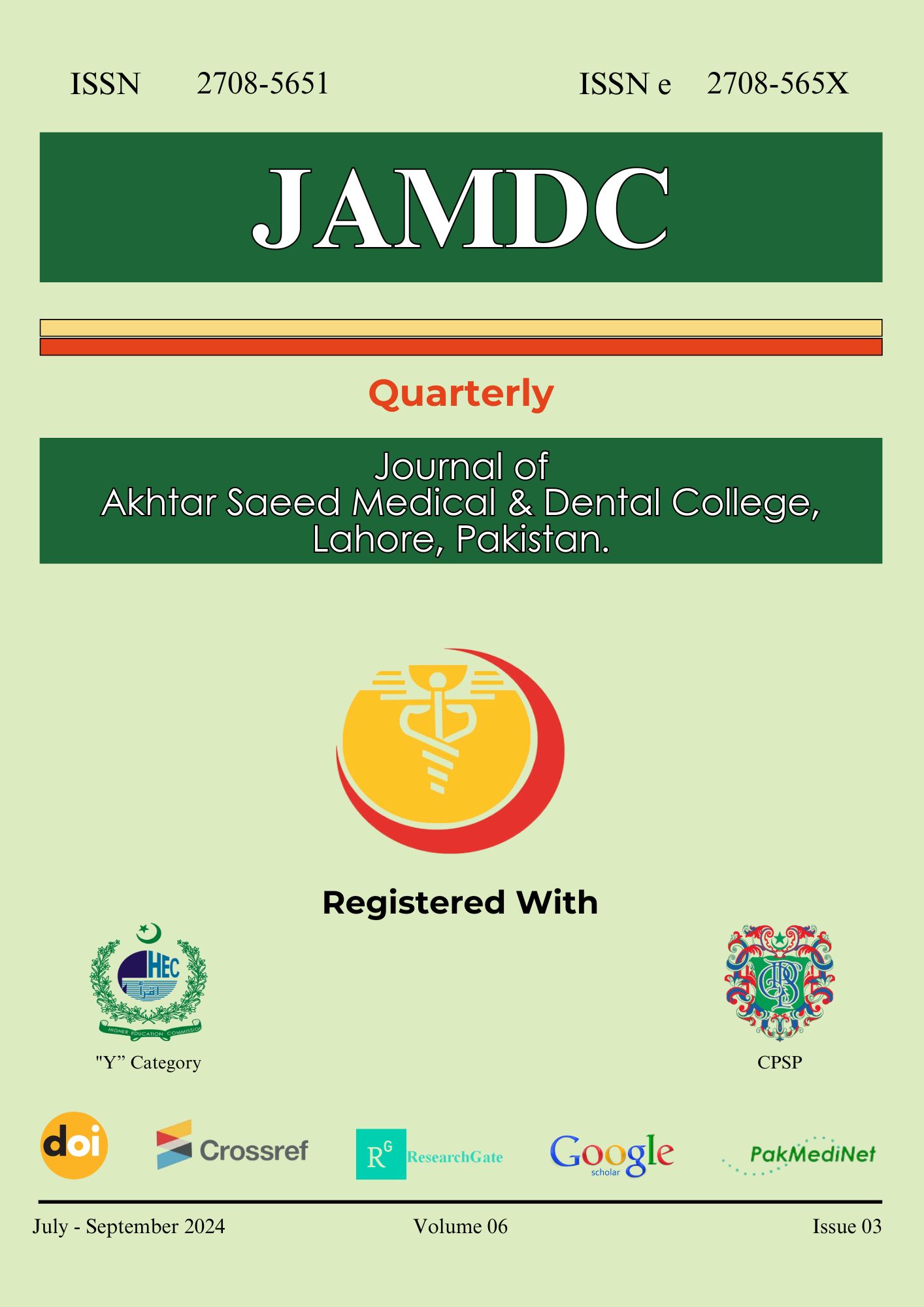ANTIBIOTICS RESISTANCE PATTERNS IN GRAM POSITIVE UROPATHOGENS IN CHILDREN
Main Article Content
Abstract
Background:
Children and infants are commonly infected with UTIs due to several anatomical reasons and hygiene measures. This study was conducted to see antibiotic-resistant patterns in Gram Positive Uropathogens in children in Children's Hospital, Lahore. The most common organisms causing UTI in children are gram-negative pathogens but some gram-positive pathogens.
Materials & Methods:
Urine samples obtained from 200 children taken with non-probability, convenient method presenting with UTI were cultured on CLED agar and then drug sensitivity testing of isolated gram positive bacteria (n=25) was performed using Disk diffusion (Kirby Bauer)
method on Muller Hinton agar plates as per standard laboratory guidelines. A descriptive study (cross-sectional) was conducted to assess sensitivity against Ampicillin, Cotrimoxazole, amoxicillin, cefotaxime, Ceftriaxone, tobramycin, amikacin, Sulbactam, Nitrofurantoin, and Polymixin B.
Results:
The mean age of children in this study was 2.4 years from 0 to 5 years. Among Gram positive uropathogens Staphylococcus aureus (65%) was the commonest organism isolated. Enterococci were isolated in 25% of cases. Coagulase-negative staphylococci were 10%. Gram
positive cocci included Methicillin Sensitive Staphylococcus Aureus (MSSA) (50%) and Methicillin Resistant Staphylococci (MRSA) (50%). The highest resistance was noted against Ampicillin (68%). The lowest resistance was noted against tobramycin (24%).
Conclusion:
Emerging antibiotic resistance has rendered many first-line drugs ineffective against UTI-causing organisms and treatment regimens need to be revised.

